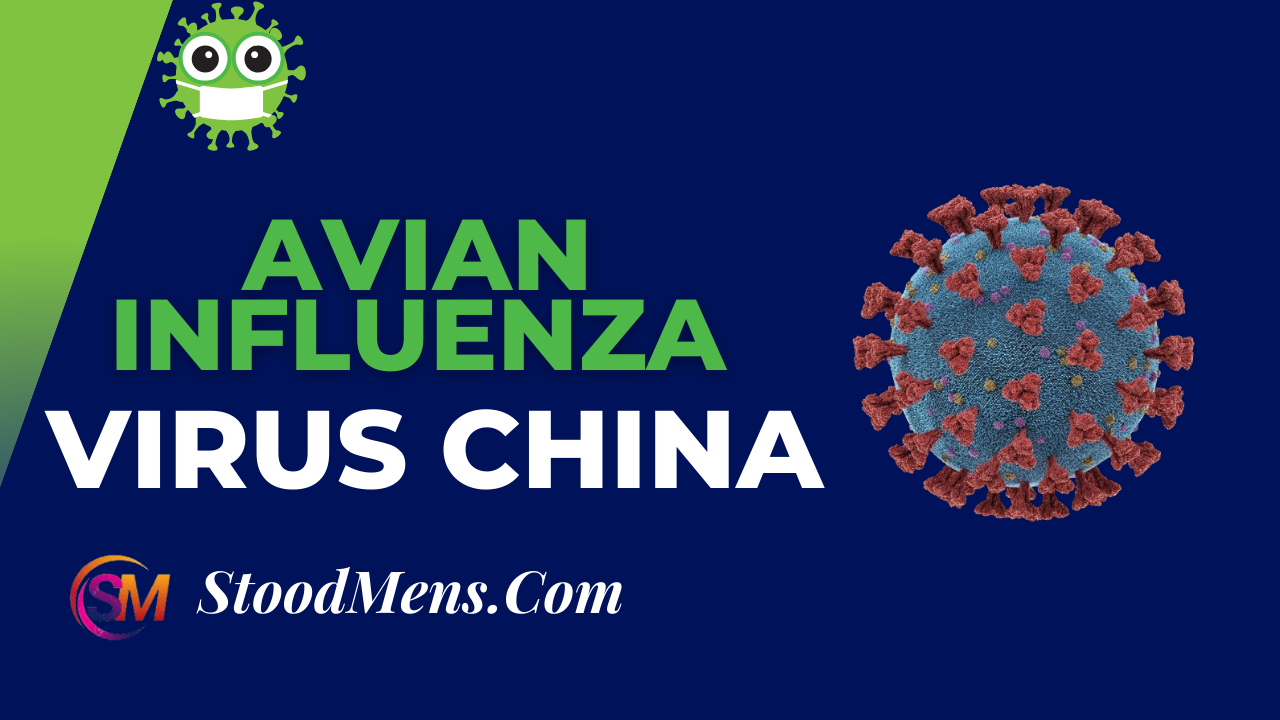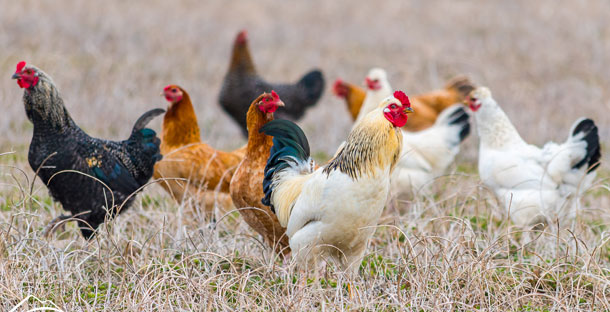Avian Influenza Virus China
The emergence of the Avian Influenza virus, specifically A (H3N8), in China, demands pressing interest and knowledge. With its ability to affect each avian population and human fitness, this outbreak has become a focal point of world problems.
In this newsletter, we delve into present-day traits, strategies employed for manipulation, and the wider implications of the situation. Live knowledgeablely as we navigate through the important factors of this Avian Influenza crisis, dropping light on the vital information that outlines its scope and effect.
Understanding Avian Influenza Virus (H3N8) Symptoms
- Fever: Birds defiled with the H3N8 contamination could have a high fever. Especially when people become sick and their inward intensity level climbs, birds can, in like manner, experience fever when they have avian influenza.
- Coughing and Sneezing: Like individuals, birds can hack and wheeze when they’re weakened. If you notice birds making amazing sounds like hacking or sneezing, it might be a sign that they have avian influenza.
- Inconvenience Unwinding: Birds with H3N8 disease could find it hard to unwind conventionally. You could see them breathing faster than anticipated or with inconvenience. This is because the contamination impacts their respiratory structure.
- Lessened Craving: When birds are incapacitated with avian influenza, they presumably won’t have any desire to eat a ton. If you notice birds not eating their common food or eating less, it might be a sign of illness.
- Deficiency: Cleared out birds could become delicate and less powerful than anticipated. You could see them holding on for broad stretches or not moving around a great deal.
- Watery or greenish droppings: The droppings of birds spoiled with H3N8 disease could give off an impression of being exceptional from regular. They could be watery or have a greenish assortment instead of the standard solid or caramel tone.
If you expect to see any of these secondary effects in birds, it’s important to take action to prevent the spread of the disease. Contact a veterinarian or animal welfare person capable of helping and regard their direction as the most ideal way to truly zero in on cleared-out birds and thwart the spread of avian influenza to various birds or animals. Remember, taking quick action can help protect the two birds and people from turning out to be sick.
Avian Influenza Virus Outbreak information
The continuing Avian Influenza A (H3N8) outbreak in China has caused speedy and complete reporting via diverse channels. Disease Outbreak Information (DON) serves as a critical source for disseminating actual records and providing updates on the development of the outbreak. These reviews not only seize the current state of the crisis but also offer insights into the dynamics of the virus, its affected regions, and the measures applied for containment.
In the context of Avian Influenza A (H3N8), DON acts as a critical conversation device, ensuring that the worldwide community remains informed about present-day trends. The reviews cover numerous factors, including instances, geographical unfolding, and notable trends determined during the outbreak. The government utilizes this platform to deliver public health advisories, enabling people and groups to take necessary precautions.
The frequency and immediacy of disease outbreak news underscore the urgency of addressing the Avian Influenza disaster. As we discover this phase, we gain access to a chronological file of activities, allowing us to hint at the evolution of the outbreak. Stay tuned as we analyze the patterns, responses, and implications outlined in the disease outbreak news, providing complete knowledge of the unfolding scenario and its impact on each avian and human population.
Scenario overview
In this section, we intend to provide a snapshot of the current situation concerning the Avian Influenza A (H3N8) outbreak in China. The state of affairs evaluation focuses on supplying key records and the general reputation of the outbreak to provide readers with clean know-how of the magnitude and severity of the crisis.
As of [current date], the outbreak has exhibited dynamic patterns, with stated instances, affected regions, and transmission quotes constantly evolving. Knowledge of the geographical volume of the outbreak is critical, and this phase will delineate the regions most impacted by the virus.
Key statistical facts include the number of cases, mortality rates, and the timeline of the outbreak’s development. Additionally, we will explore any awesome shifts in the virus’s behavior, including mutations or adjustments in transmission dynamics.
The situation review serves as a foundation for readers to comprehend the urgency and scope of the Avian Influenza A (H3N8) outbreak in real time. By analyzing trendy records and trends, we will determine traits, check the effectiveness of carried-out measures, and count on future demanding situations. Stay tuned as we navigate through the elaborate details of the outbreak’s modern repute, shedding light on the facts that inform international responses to this public health disaster.
Description of the situation
Expertise in the character and characteristics of the Avian Influenza A (H3N8) virus is critical to navigating the complexities of the continued outbreak in China. This segment offers an in-depth description of the virus, focusing on its organic features, mode of transmission, and effect on each avian and human host.
Biological capabilities: The Avian Influenza A (H3N8) virus is a subtype of the influenza pandemic recognized for its genetic diversity. Characterized through the surface proteins hem agglutinin (H) and neuraminidase (N), this well-known pressure shows particular attributes that affect its transmissibility and virulence. Know-how for those organic markers is essential for comprehending the virus’s behavior and adapting control techniques accordingly.
Mode of Transmission: The virus in most cases spreads among birds, with waterfowl being an herbal reservoir. However, its zoometric capacity raises concerns about transmission to people. Exploring the modes of transmission, which include direct bird-to-chicken contact, contaminated surfaces, or respiration droplets, presents insights into the demanding situation of controlling its unfold.
Impact on Avian Populations: Avian Influenza A (H3N8) poses a considerable risk to avian populations, specifically roosters. High morbidity and mortality rates in infected birds could devastate the chicken industry. This section outlines the particular impacts on one-of-a-kind avian species, emphasizing the economic and ecological implications of the virus.
Zoometric worries: At the same time as the primary host is an avian, the capability for zoometric transmission to human beings is a critical element of the scenario. Investigating said cases and understanding the mechanisms that facilitate or restrict human infection is paramount for public fitness preparedness.
As we delve into the description of the state of affairs, we resolve the intricacies of the Avian Influenza A (H3N8) virus, presenting a comprehensive foundation for the ongoing outbreak in China. Stay informed as we explore the virus’s characteristics, transmission dynamics, and effect on avian and human health.
Epidemiology
The epidemiology of the Avian Influenza A (H3N8) outbreak in China plays a pivotal role in understanding how the virus spreads and identifying elements contributing to its transmission. This section delves into the epidemiological factors, shedding light on the styles observed, affected populations, and the dynamics influencing the outbreak’s trajectory.
Geographical unfold: inspecting the geographical distribution of the cases shown is essential in mapping the volume of the outbreak. By identifying hotspots and expertise in the nearby variations, the government can tailor interventions to precise areas, mitigating the virus’s impact.
Transmission Dynamics: Understanding how the virus is transmitted is vital for imposing powerful management measures. This segment explores the modes of transmission within avian populations and, if applicable, the ability for spillover into human communities. Unraveling the transmission dynamics is fundamental to developing focused techniques for containment.
Affected Populations: The epidemiological profile of affected populations affords insights into the vulnerability of different avian species and, if relevant, the potential risks to human fitness. Studying elements, which include age, species susceptibility, and environmental conditions, contributes to providing complete information on the outbreak’s effect.
Incubation period and viral loss: Exploring the incubation length of the virus and the duration of viral loss is vital for figuring out the best windows for surveillance and management efforts. This understanding aids in developing effective strategies for early detection and intervention.
Risk factors and demanding situations: Identifying hazard elements associated with the spread of Avian Influenza A (H3N8) is crucial for proactively addressing challenges. This segment explores factors along with chicken migration patterns, stay rooster exchange, and insecurity measures to evaluate capability-demanding situations and tell-centered interventions.
As we navigate through the Epidemiology segment, we aim to unravel the complex net of factors influencing the unfolding of the Avian Influenza A (H3N8) virus in China. Stay tuned for insights into the geographical distribution, transmission dynamics, affected populations, and the overall epidemiological panorama shaping the route of the outbreak.
Public health response
In the face of the Avian Influenza A (H3N8) outbreak in China, a strong and coordinated public fitness response is vital. This phase offers an in-depth examination of the moves taken by the government to comprise and manipulate the outbreak, emphasizing the strategies employed at nearby, country-wide, and international levels.
Surveillance and tracking: One of the foundational elements of the general public fitness response is the established order of strong surveillance and tracking structures. This entails constant monitoring of confirmed cases, geographical spread, and any mutations within the virus. Early detection through surveillance is vital for implementing timely interventions.
Quarantine and motion regulations: To prevent the further spread of the virus, authorities frequently put in force quarantine measures and motion restrictions. This section explores the nature and quantity of these measures, their impact on affected regions, and their effectiveness in controlling the outbreak.
Culling and Insecurity Measures: In instances where avian populations are affected, culling infected birds and implementing stringent insecurity measures are commonplace strategies. This section delves into the moral issues, logistically demanding situations, and the effectiveness of such measures in containing the virus.
Vaccination applications: Vaccination plays an important role in handling and preventing the unfolding of Avian Influenza. This phase examines the deployment of vaccination packages, their scope, and their effect on both avian and human populations.
Threat communication and Public focus: Powerful danger communication is critical in ensuring public cooperation and knowledge. Authorities disseminate data on preventive measures, signs, and remedy options. This phase explores the verbal exchange techniques employed and their effectiveness in elevating public consciousness.
International Collaboration: Given the worldwide nature of fitness threats, worldwide collaboration is often a key factor in the public health reaction. This phase explores collaborative efforts, consisting of information sharing, useful resource mobilization, and the role of international groups in helping the affected place.
As we dissect the public fitness reaction to the Avian Influenza (H3N8) outbreak, our goal is to provide complete expertise on the strategies hired by the government. Stay tuned for insights into surveillance efforts, quarantine measures, culling techniques, vaccination programs, chance conversations, and the collaborative efforts shaping the response to this public health crisis.
WHO risks evaluation?
The World Health Organization (WHO) plays a pivotal role in assessing the worldwide impact and risks associated with the Avian Influenza A (H3N8) outbreak in China. This section delves into hazard assessment, examining the standards used, the severity stage assigned, and the consequences for global fitness protection.
Criteria for threat evaluation: The WHO employs a set of standards to assess the threat posed by infectious disorder outbreaks. This segment outlines the important factors considered, which include the virus’s transmissibility, severity of contamination, capacity for global spread, and effect on susceptible populations.
Contemporary danger level: information on the modern-day risk level assigned by way of which is crucial for gauging the severity of the outbreak. This section presents insights into whether the Avian Influenza A (H3N8) outbreak is categorized as a global health emergency and the factors influencing this category.
Global Implications: The who is threat assessment extends past person nations, thinking about the potential global implications of the outbreak. This section explores how the business enterprise collaborates with member states to put into effect measures that safeguard international public fitness.
Suggestions and hints: Based on their chance evaluation, the WHO makes recommendations and recommendations to affected international locations. Those may also consist of preventive measures, remedy protocols, and techniques for minimizing the hazards of worldwide transmission. This phase examines the unique tips made in reaction to the Avian Influenza A (H3N8) outbreak.
Coordination with Member States: The WHO collaborates intently with member states to ensure a coordinated and powerful reaction to the outbreak. This phase explores the mechanisms via which the business enterprise allows record change, useful resource mobilization, and capacity-building to enhance worldwide preparedness.
As we navigate via the WHO danger evaluation, we intend to offer complete expertise on how the global health community evaluates the severity and implications of the Avian Influenza A (H3N8) outbreak. Live tuned for insights into hazard standards, current threat degrees, international implications, and the collaborative efforts led through the World Fitness Corporation to address this public fitness project.
Managestrategiesin China
The response to the Avian Influenza A (H3N8) outbreak in China entails a complete set of management techniques aimed at mitigating the impact of the virus. This segment explores the instructions found and techniques hired by Chinese language authorities to manage the outbreak effectively.
Early Detection and rapid reaction: Early detection of Avian
Influenza instances are critical for imposing quick and centered responses. This phase delves into the surveillance mechanisms in the vicinity, which include energetic case detection, tracking of avian populations, and the coordination of response teams. The know-how of how China has employed early detection strategies affords insights into the effectiveness of its rapid reaction efforts.
Culling and Biosecurity Measures: Culling infected birds and imposing stringent biosecurity measures are common strategies to prevent the unfolding of the virus. This section examines the extent to which these measures have been employed in China, considering elements including the size of culling operations, moral issues, and the effect on affected groups.
Vaccination applications: Vaccination is a key aspect of controlling avian influenza outbreaks. This segment explores China’s approach to vaccination, such as the scope of vaccination programs, focused populations, and the effectiveness of vaccines deployed. Analyzing the function of vaccination presents insights into the preventive measures followed by Chinese language authorities.
Quarantine and movement restrictions: Quarantine measures and movement regulations are instrumental in limiting the unfolding of the virus. This phase analyzes the nature and quantity of quarantine measures imposed in affected areas, their impact on the motion of human beings and items, and their effectiveness in containing the outbreak.
International Collaboration: China’s collaboration with worldwide businesses and different nations is a critical part of its management strategies. This section explores the extent to which China has engaged in fact-sharing, aid mobilization, and collaborative efforts with the global network to cope with the Avian Influenza A (H3N8) outbreak.
Through examining the control strategies employed in China, we aim to provide precious insights into the lessons learned and the effectiveness of those measures. Stay tuned for a comprehensive exploration of early detection efforts, culling and biosecurity measures, vaccination applications, quarantine strategies, and global collaboration shaping the reaction to the Avian Influenza A (H3N8) outbreak in China.
Worldwide Implications
The Avian Influenza A (H3N8) outbreak in China has far-reaching implications beyond its borders. This phase explores the worldwide impact of the outbreak, considering its effects on international fitness, alternate, and the wider implications for avian and human populations worldwide.
International Spread and Preparedness: The interconnected nature of the global network means that infectious diseases can easily transcend borders. This segment examines the worldwide spread of the Avian Influenza virus, evaluating the preparedness of different nations to respond to outbreaks and the measures taken to prevent the virus’s dissemination.
Economic consequences: The financial outcomes of the outbreak increased beyond China, affecting international trade and the poultry industry. This phase analyzes the effect on global markets, change regulations imposed by way of affected and unaffected international locations, and the monetary demanding situations faced through the fowl quarter globally.
Potential for Zoometric Transmission: The capacity for zoometric transmission is a vital issue with global implications. By assessing the chance of the virus spreading to human beings in other regions, this section explores the measures taken with the aid of nations to display and prevent human infections, highlighting the importance of worldwide health protection.
Collaborative research and innovation: worldwide collaboration in studies and innovation is crucial for the expertise of the virus and developing powerful countermeasures. This section examines collaborative efforts in vaccine development, antiviral studies, and information-sharing in most of the global medical community to address the challenges posed by Avian Influenza.
Effect on Avian Biodiversity: Beyond economic and human health considerations, the outbreak has outcomes for avian biodiversity. This phase explores the ecological impact of the virus on wild chook populations and its implications for the broader atmosphere.
As we delve into the worldwide Implications of the Avian Influenza A (H3N8) outbreak, our goal is to provide comprehensive expertise on the way the disaster extends beyond countrywide borders. stay tuned for insights into international spread, monetary outcomes, zoometric transmission dangers, collaborative studies efforts, and the effect on avian biodiversity, shaping the worldwide reaction to this public health undertaking.
Human infection cases
The emergence of human infection instances amid the Avian Influenza A (H3N8) outbreak in China raises considerable public health concerns. This phase delves into the reporting, response, and implications of human infections, offering an in-depth analysis of the measures taken to control and mitigate the risk to human health.
Showed instances and epidemiological characteristics: understanding the epidemiological characteristics of showed human cases is vital for assessing the danger and enforcing focused responses. This phase explores the number of shown instances, demographic statistics, and the styles of transmission from avian to human populations.
Public health measures: In response to human infections, public health measures are implemented to contain the spread and defend groups. This segment examines the measures taken through fitness authorities, which include contact tracing, quarantine protocols, and communication strategies to elevate attention and sell preventive measures.
Remedy Protocols and Healthcare Capability: The medical response to human infections involves remedy protocols and the evaluation of healthcare capacity. This segment explores the treatment options available, the effectiveness of antiviral medicines, and the challenges faced by healthcare structures in coping with each avian and human influenza instance concurrently.
Risk communication and public awareness: powerful danger communication is critical in addressing public concerns and making sure compliance with preventive measures. This segment analyzes the verbal exchange techniques employed with the aid of health authorities to disseminate information about the dangers of human contamination, symptoms, and preventive measures.
Global Collaboration on Human Fitness: Given the potential for global fitness implications, international collaboration on human health becomes paramount. This section explores how China collaborates with international companies and other nations to share information, assets, and information in dealing with human infections and stopping further unfolding.
As we navigate through the human infection instance phase, we aim to provide a comprehensive knowledge of the impact of Avian Influenza A (H3N8) on human fitness. Stay tuned for insights into confirmed cases, public health measures, treatment protocols, danger communication strategies, and global collaboration in addressing the human aspect of this multifaceted public health disaster.
Conclusion
The Avian Influenza A (H3N8) outbreak in China represents a multifaceted public fitness undertaking with worldwide implications. From disease outbreak news reporting to WHO danger tests, the response has been marked by rapid and coordinated efforts.
Through designated exploration of the virus’s nature, epidemiology, and the general public’s fitness reaction, we’ve uncovered the intricacies of this crisis. Manage strategies in China, encompassing early detection, culling, and vaccination; provide precious classes for destiny outbreaks.
The worldwide impact underscores the interconnectedness of health, exchange, and biodiversity. As human infections emerge, international collaboration will become essential. In conclusion, this text presents a complete evaluation, losing mild on the complexities of the Avian Influenza A (H3N8) outbreak, with the hope that the classes discovered will inform and strengthen future global responses to rising infectious illnesses.





One thought on “A Complete Guide On Avian Influenza Virus China”